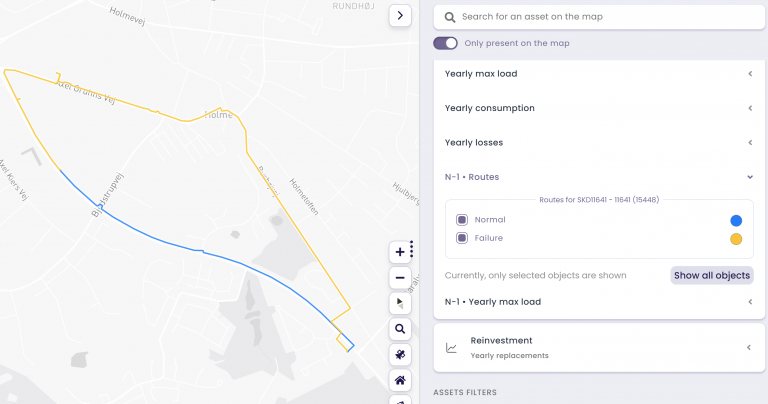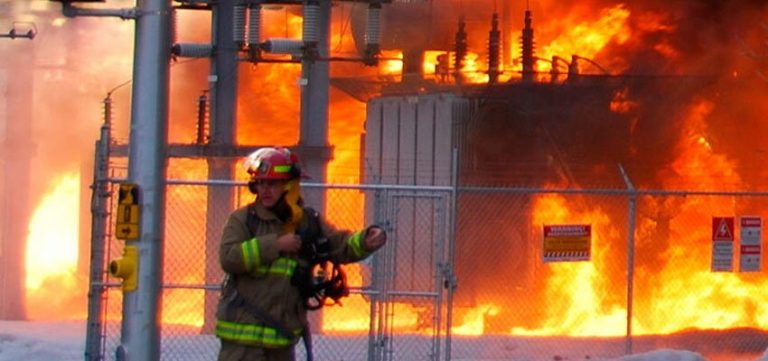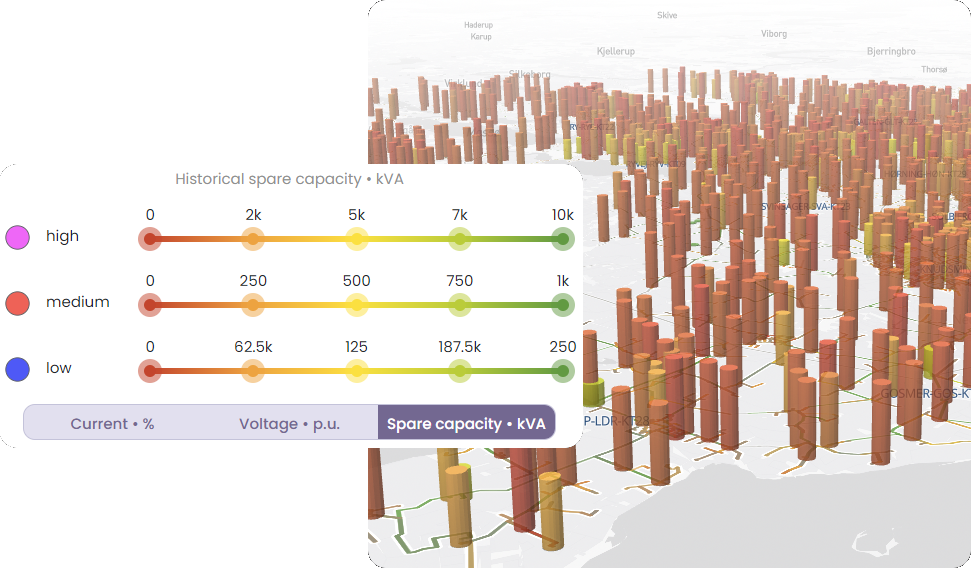
Spare capacity made simple
Spare capacity depends on a lot of different things, but at Utiligize, we simplify this complexity into understandable metrics. This way, you do not need to be an engineer to know if there’s room for a new connection today or in two years.
Planning departments benefit from 10-year forecasts of load and production so that capacity can be reserved today for new electric vehicles, heat pumps and solar panels connected to existing installations.
Utiligize’s capacity results include voltage and ampere calculations for all assets, including distribution cabinets, so that spare capacity is known across the entire network.

N-1 for every asset: automatic and updated daily
Every night, we use the latest GIS and meter data to calculate the impact of every asset failure (station, transformer, switches, feeders), ensuring grid planners have the correct capacity picture when they start working in the morning.
N-1 redundancy is typically found in all consumption areas at high and medium voltage, but only 20% of the low voltage grid. We perform billions of calculations every night to find the best backup routes that can keep the lights on for consumers in case of a failure. Different objectives can be set to define the best backup route: a maximum number of breakers changed, solutions that result in the lowest utilization, or the best voltage levels.
Utiligize’s automated approach means you can setup the system and get new results every day, updated with the latest connection request pipeline, without user intervention.

Improve resiliency against cyber and physical threats
Malicious actors have increased their cyberattacks on utility infrastructure over the last two years, where physical or cyber attacks can disable critical assets, resulting in blackouts and requiring more resilience than ever before.
Utiligize’s capacity map uses advanced theory applied to millions of different topology combinations to see where there are standby backup options and where there are not.
Utiligize’s strategic planning allows customers to set a standard for acceptable levels of redundancy to balance supply security and costs for different customer segments. This way, hospital and military installations can have a maximum security of supply, while residential areas can be driven in more cost-efficient manner.
See a video of the product in action below:
Learn more or request a demo?
Contact us